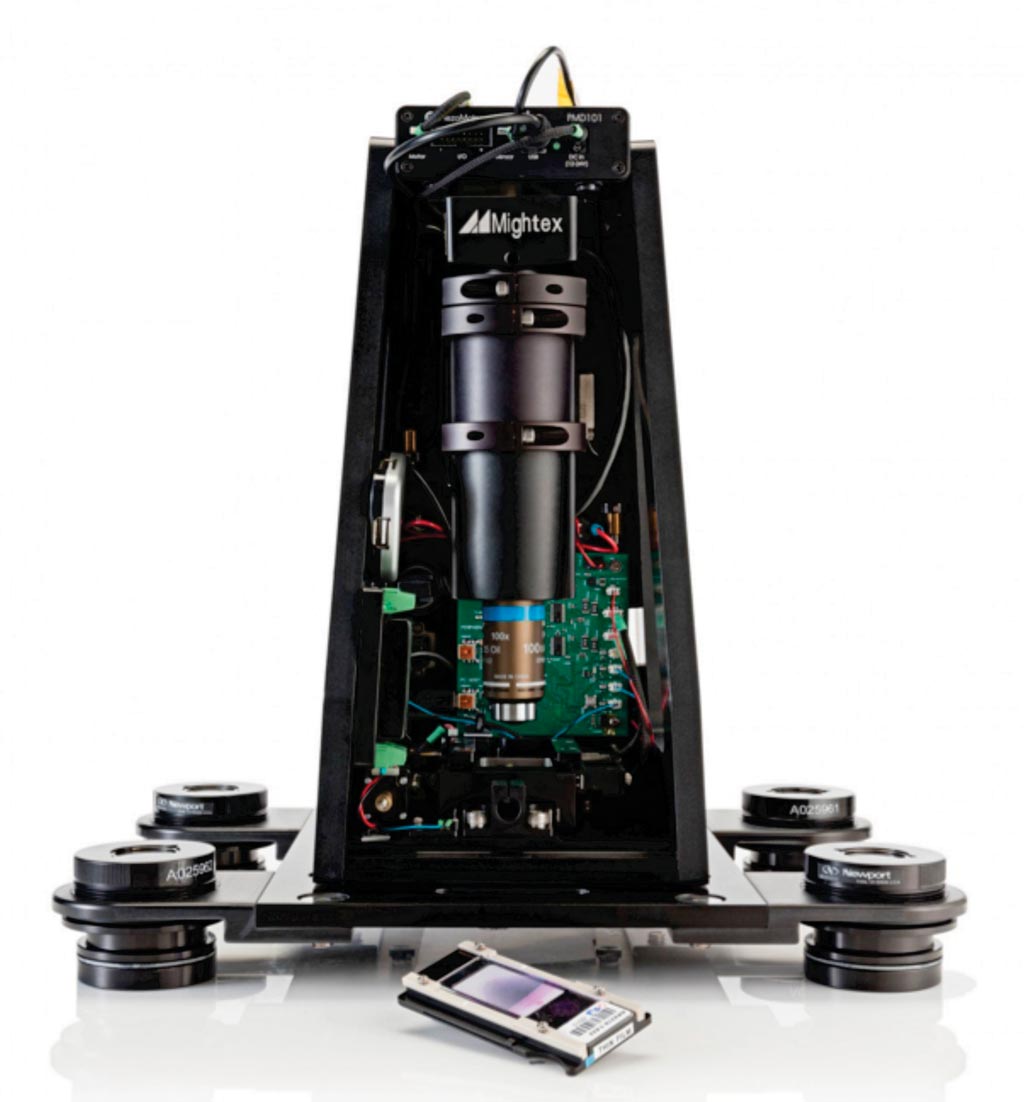Automated Microscopy Compared for Routine Malaria Diagnosis
By LabMedica International staff writers
Posted on 10 Oct 2018
Microscopic examination of Giemsa-stained blood films remains a major form of diagnosis in malaria case management. However, as with other visualization-based diagnoses, accuracy depends on individual technician performance, making standardization difficult and reliability poor.Posted on 10 Oct 2018
Automated image recognition based on machine-learning, utilizing convolutional neural networks, offers potential to overcome these drawbacks. The application of digital image recognition to malaria microscopy, using artificial intelligence algorithms to replace or supplement the human factor in blood film interpretation, have been attempted, usually on thin films.

Image: The Autoscope uses deep-learning software to quantify the malaria parasites in a sample (Photo courtesy of Intellectual Ventures).
A team of scientists collaborating with Intellectual Ventures (Bellevue, WA, USA) conducted a cross-sectional, observational trial was conducted at two peripheral primary health facilities in Peru. They enrolled 700 participants whose age was between 5 and 75 years, and had a history of fever in the last three days or elevated temperature on admission. A finger prick blood sample was taken to create blood films for microscopy diagnosis, and additional drops of blood were spotted onto filter paper for subsequent quantitative polymerase chain reaction (qPCR) analysis. A prototype digital microscope device employing an algorithm based on machine-learning, the Autoscope, was assessed for its potential in malaria microscopy.
The investigators reported that at one clinic, sensitivity of Autoscope for diagnosing malaria was 72% and specificity was 85%. Microscopy performance was similar to Autoscope, with sensitivity 68% and specificity 100%. At one clinic, 85% of prepared slides had a minimum of 600 white blood cells (WBCs) imaged, thus meeting Autoscope’s design assumptions. At the second clinic, the sensitivity of Autoscope was 52% and specificity was 70%. Microscopy performance at this second clinic was 42% and specificity was 97%. Only 39% of slides from this clinic met Autoscope’s design assumptions regarding WBCs imaged.
The authors concluded that Autoscope’s diagnostic performance was on par with routine microscopy when slides had adequate blood volume to meet its design assumptions, as represented by results from one clinic. Autoscope’s diagnostic performance was poorer than routine microscopy on slides from the other clinic, which generated slides with lower blood volumes. The study was published on September 25, 2018, in the Malaria Journal.
Related Links:
Intellectual Ventures




 assay.jpg)








